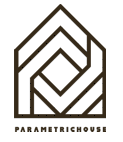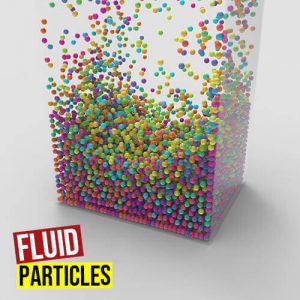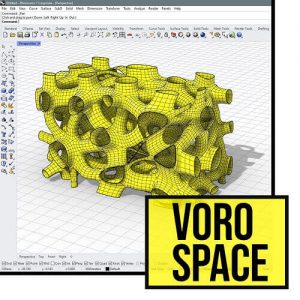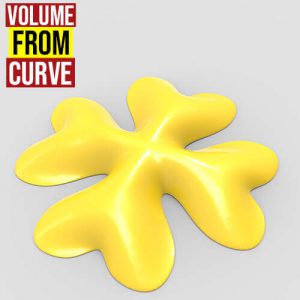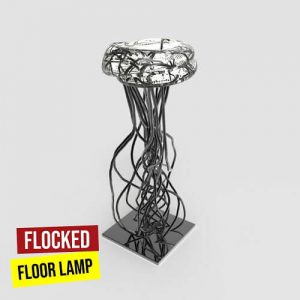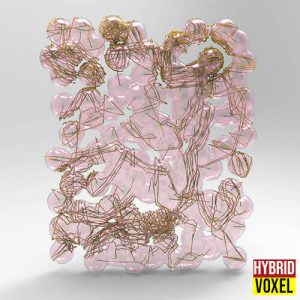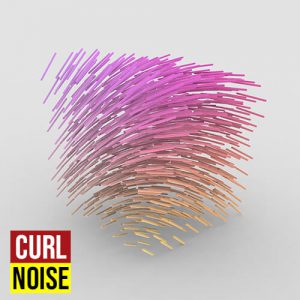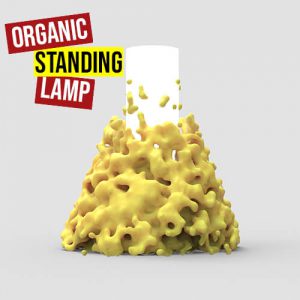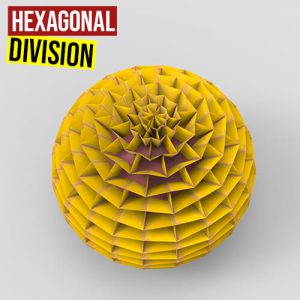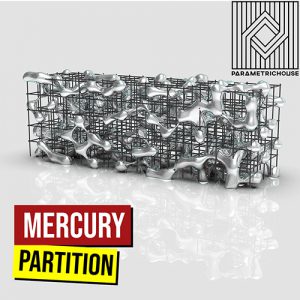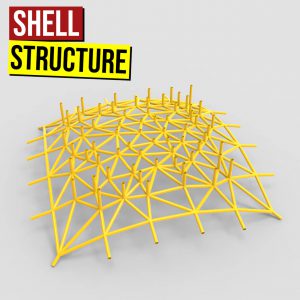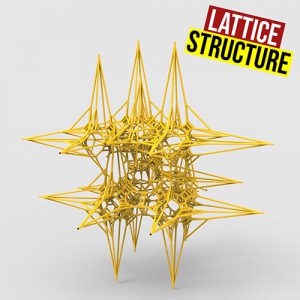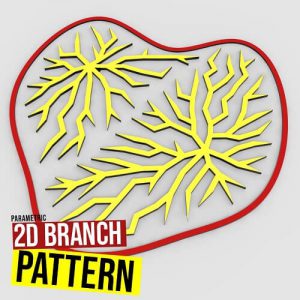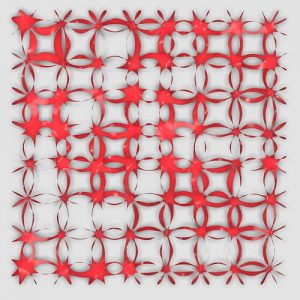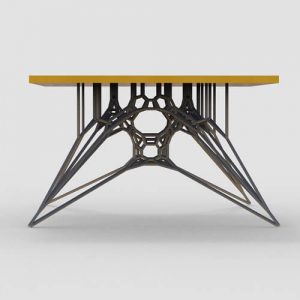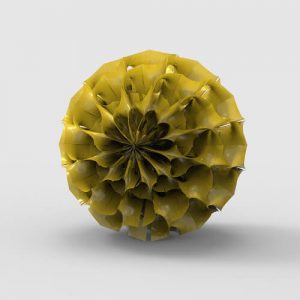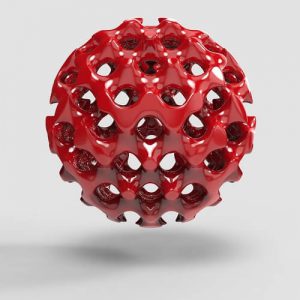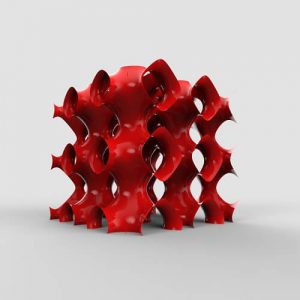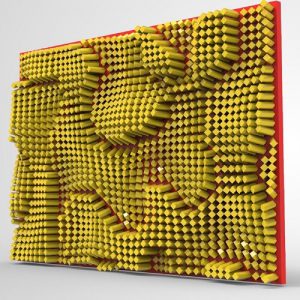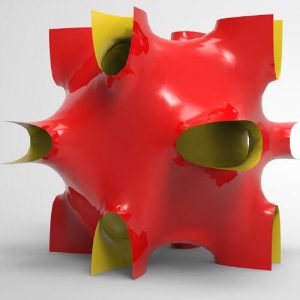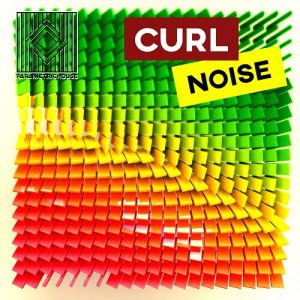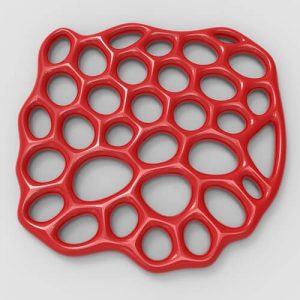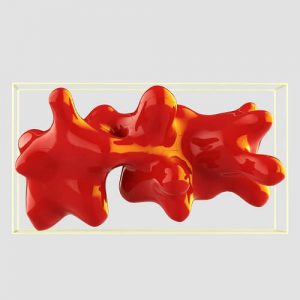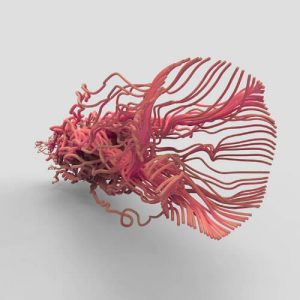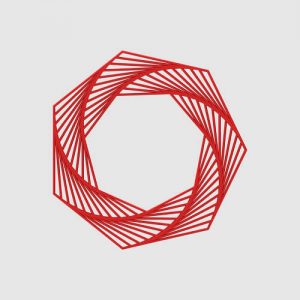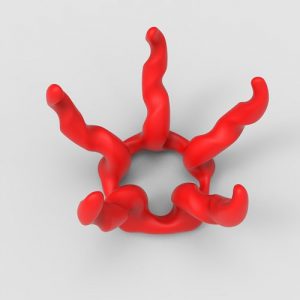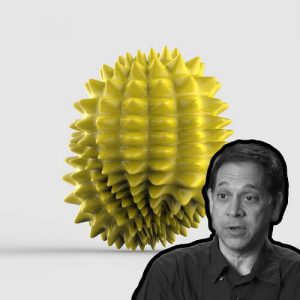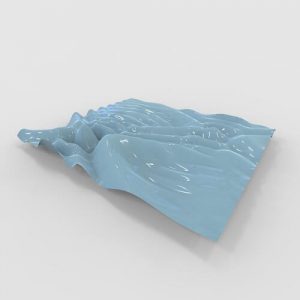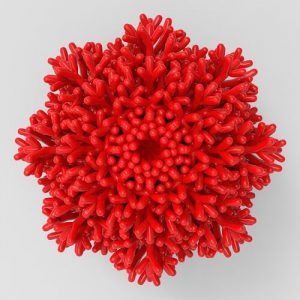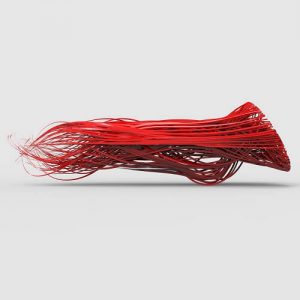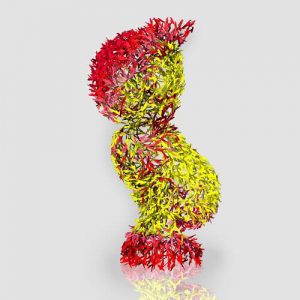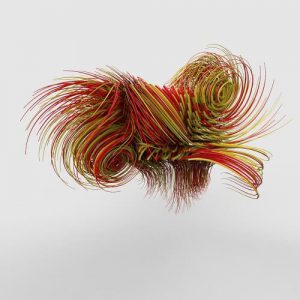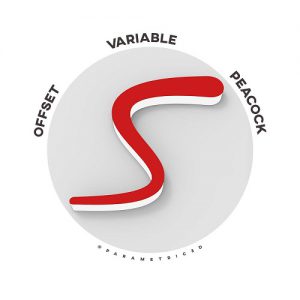In this grasshopper example file, you can simulate the fluid particles movement by using the flexhopper plugin.
In this grasshopper example file, you can model a parametric 3D voronoi form which is inspired by a code written by Co-de-iT and named Vorospace.
In this grasshopper example file you can convert a curve to a parametric shape by using the kangaroo plugin.
In this grasshopper example file you can use the agent-based modeling plug-in "culebra" to run a flocking simulation and create a floor lamp.
In this grasshopper example file you can model a parametric noise field and use the dendro plugin to voxelize it.
In this grasshopper example file you can use the kangaroo plugin to model a differential growth on a mesh.
In this grasshopper example file you can simulate the flocking of agents inside of a voxel geometry using the zebra plugin.
In this grasshopper example file you can use the curl noise plugin to generate vectors from random points.
In this grasshopper example file you can model an agent-base simulation to design a standing lamp by using the Physarealm and Dendro Plugin combined.
In this grasshopper definition, you can use the Jellyfish plugin to combine a series of spheres and a box and smooth them at the end.
In this grasshopper definition, you can divide a NURBS surface into hexagons and then extrude them by using the Ngon plugin.
In this grasshopper definition, you can model a structural frame in grasshopper and then use the nodes to generate a random voxelized volume using the Cocoon plugin.
In this grasshopper definition, you can connect your geometrical parametrs to the "gene" input of Biomorpher Plugin. After that, you can select between different designs and choose the preferred generated parent.
In this grasshopper definition by using the 3D graphic static plugin you can model an optimized structure.
In this grasshopper definition, you can model a 3d voxelized form by using a 2d pattern. Monolith plugin is used for the voxelization. plugin used: Monolith ***you should use the "2d noise pixels" folder for defining the patterns******
In this grasshopper example by defining a force diagram you can model an optimized lattice structure by using the 3D graphic static plugin.
In this Grasshopper definition, you can define a planar closed curve and a series of points for the branching base locations. use the Shortest walk plugin to find the nearest distance between the starting point and the branches. Finally, you can give it a thickness.
In this grasshopper definition, you can generate a Perlin noise on a pattern and use it for weaving the parameters. you can also use weaverbird to smooth the result.
In this grasshopper definition by designing a force diagram instead of designing a form diagram of a bridge you can generate an optimized structure by using the 3D graphic static plugin.
In this grasshopper definition, you can learn how to simulate the collision of particles by using the Flexhopper plugin.
In this grasshopper definition you can model a hanging cloth by using the flexhopper plugin. We also have used some components to collide a sphere with the mesh.
In this grasshopper definition, by using the Fox & Pufferfish plugin you can model different expressions of minimal surfaces.
In this grasshopper definition, you can create a voxelized shell shape by subtracting two volumes and finally model a Triply Periodic Minimal Surface.
In this grasshopper definition you can create a 3d sine iso surface by using the Axolotl Plugin.
In this grasshopper definition by creating and adjusting a parametric noise on a grid of points and then lofting them back you can model a kinetic like form.
In this grasshopper definition by using standard minimal surface equations, you can create different minimal surfaces and also use Align vertices to avoid generating an invalid mesh.
In this grasshopper definition you can create a grid of boxes and change their oreintations by using the CurlNoise Component.
In this grasshopper definition by using the Stella3d plugin and Weaverbird you can model a parametric expanding voronoi cell model.
In this grasshopper definition by using the Stella3d plugin you can simulate a series of particles which try to reach defined point targets and then voxelize them by using Cocoon, you can also refine it as an additional step.
In this grasshopper definition, you can create a set of polygons in the Z direction and scale them by using the noise components from Noise 4d plugin. You can also thicken the polygons with Fatten.
In this grasshopper definition by applying forces and noise, you can model a natural movement of particles. This definition is using Anemone and 4D Noise plugin.
In this definition you can make a fractal rotating polygon by using the Anemone plugin. First we are going to explode the curve to its segments and then evaluate a point on the edges. This recursive algorithm will produce the final rotating polygons.
In this grasshopper definition we have used the Cocoon plugin to create a voxelized mesh with a set of custom curves and a series of parameters which can change the parametric shape.
In this definition we will use Perlin noise as the base deformation of a sphere. Perlin noise is a type of gradient noise developed by Ken Perlin in 1983.
In this grasshopper definition you can use the point attractor technique combined with Heteroptera plugin to model a wavy like surface.
In this grasshopper definition we have used the Rabbit Plugin to produce a parametric L-System by defining rules and number of agents (Turtles). The Starting position has been found on a sphere
In this grasshopper definition you can create a simple simulation of attraction through agent base modeling and traces are captured, by using Heteroptera Plugin.
In this grasshopper definition you can aggregate a custom module (Tile) by defining junctions using Fox Plugin.
In this grasshopper definition you can create field which is made by grid of points and thicken them by Variable sweep in Heteroptera plugin.
by using the Peacock plugin (Offset variable component) you can simply offset a curve with variable numbers and define if you want it to offset from both sides, how to connect at the end and control the Bulge.
